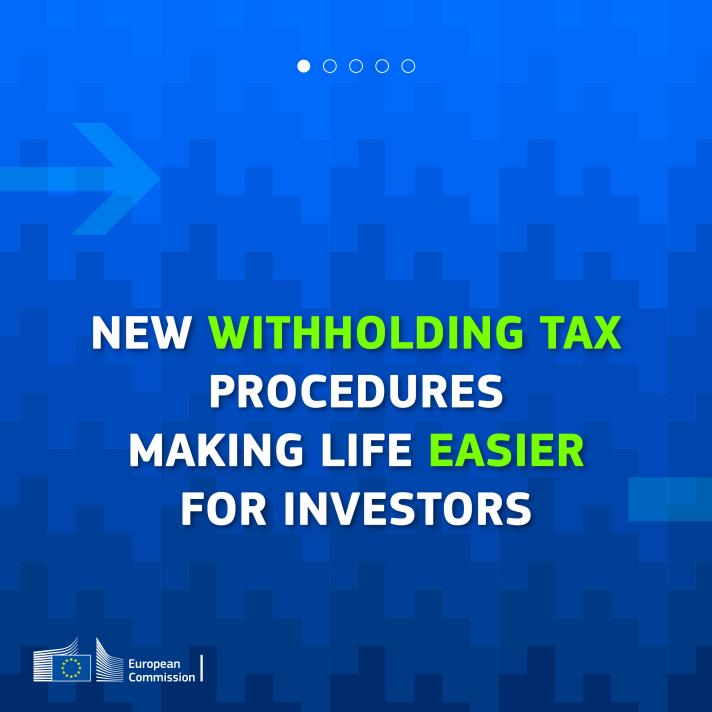This initiative – a key element of the Communication on Business Taxation for the 21st Century, as well as the Capital Markets Union more broadly – will promote fairer taxation, fight tax fraud, and support cross-border investment throughout the EU.
The term “withholding tax” refers, for example, to the situation where an investor resident in one EU Member State is liable to pay tax on the interest or dividends earned in another Member State. This is often the case for cross-border investors. In such a scenario, in order to avoid double taxation, many EU Member States have signed double taxation treaties, which avoid the same individual or company being taxed twice. These treaties allow a cross-border investor to submit a refund claim for any excess tax paid in another Member State.
The problem is that these refund procedures are often lengthy, costly and cumbersome, causing frustration for investors and discouraging cross-border investment within and into the EU. Currently, the withholding tax procedures applied in each Member State are very different. Investors have to deal with more than 450 different forms across the EU, most of which are only available in national languages. The Cum/Ex and Cum/Cum scandals have also shown how refund procedures can be abused: the tax losses from these practices have been estimated at € 150 billion for the years 2000-2020.
Key actions proposed today will make life easier for investors, financial intermediaries and national tax authorities:
- A common EU digital tax residence certificate will make withholding tax relief procedures faster and more efficient. For example, investors with a diversified portfolio in the EU will need only one digital tax residence certificate to reclaim several refunds during the same calendar year. The digital tax residence certificate should be issued within one working day after the submission of a request. At present, most Member States still rely on paper-based procedures.
- Two fast-track procedures complementing the existing standard refund procedure: a “relief at source” procedure and a “quick refund” system, which will make the relief process faster and more harmonised across the EU. Member States will be able to choose which one to use – including a combination of both.
- Under the “relief at source” procedure, the tax rate applied at the time of payment of dividends or interest is directly based on the applicable rules of the double taxation treaty provisions.
- Under the “quick refund” procedure, the initial payment is made taking into account the withholding tax rate of the Member State where the dividends or interest is paid, but the refund for any overpaid taxes is granted within 50 days from the date of payment.
These standardised procedures are estimated to save investors around €5.17 billion per year.
- A standardised reporting obligation will provide national tax administrations with the necessary tools to check eligibility for the reduced rate and to detect potential abuse. Certified financial intermediaries will have to report the payment of dividends or interest to the relevant tax administration so that the latter can trace the transaction. In particular, large EU financial intermediaries will be required to join a national register of certified financial intermediaries. This register will also be open to non-EU and smaller EU financial intermediaries on a voluntary basis. Taxpayers investing in the EU through certified financial intermediaries will benefit from fast-track withholding tax procedures and avoid double taxation on dividend payments. The more financial intermediaries register, the easier it will be for tax authorities to process refund requests, regardless of the procedure used.
Next steps
Once adopted by Member States, the proposal should come into force on 1 January 2027.
Sources
Details
- Publication date
- 19 June 2023
- Author
- Directorate-General for Taxation and Customs Union

